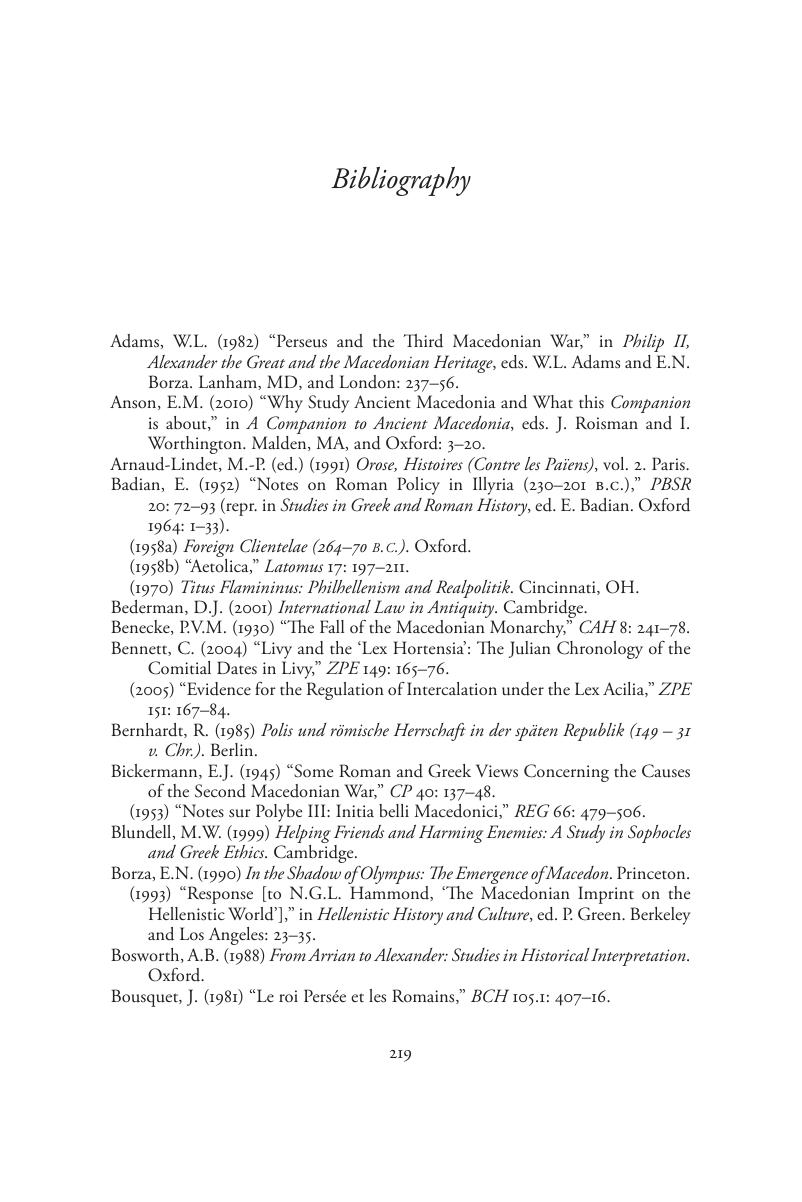Book contents
- Rome and the Third Macedonian War
- Rome and the Third Macedonian War
- Copyright page
- Dedication
- Contents
- Figures
- Maps
- 1 Introduction
- 2 Rome and Macedon
- 3 The Last Years of Philip V
- 4 The Reign of Perseus
- 5 The Causes of the Third Macedonian War
- 6 The Third Macedonian War
- 7 Aftermath
- Conclusion
- Book part
- Bibliography
- Index
- References
Bibliography
Published online by Cambridge University Press: 29 September 2017
- Rome and the Third Macedonian War
- Rome and the Third Macedonian War
- Copyright page
- Dedication
- Contents
- Figures
- Maps
- 1 Introduction
- 2 Rome and Macedon
- 3 The Last Years of Philip V
- 4 The Reign of Perseus
- 5 The Causes of the Third Macedonian War
- 6 The Third Macedonian War
- 7 Aftermath
- Conclusion
- Book part
- Bibliography
- Index
- References
Summary

- Type
- Chapter
- Information
- Rome and the Third Macedonian War , pp. 214 - 218Publisher: Cambridge University PressPrint publication year: 2017

